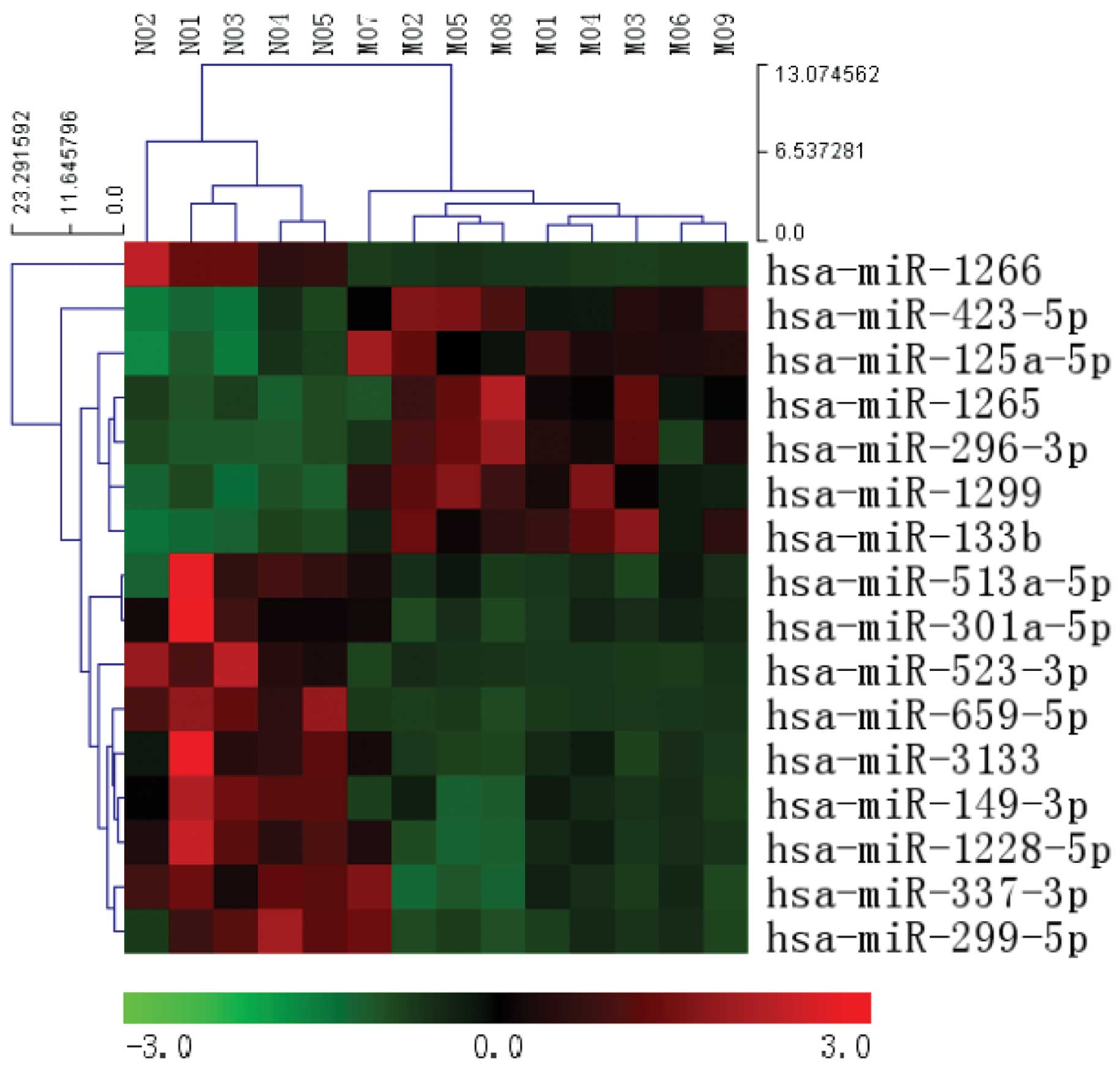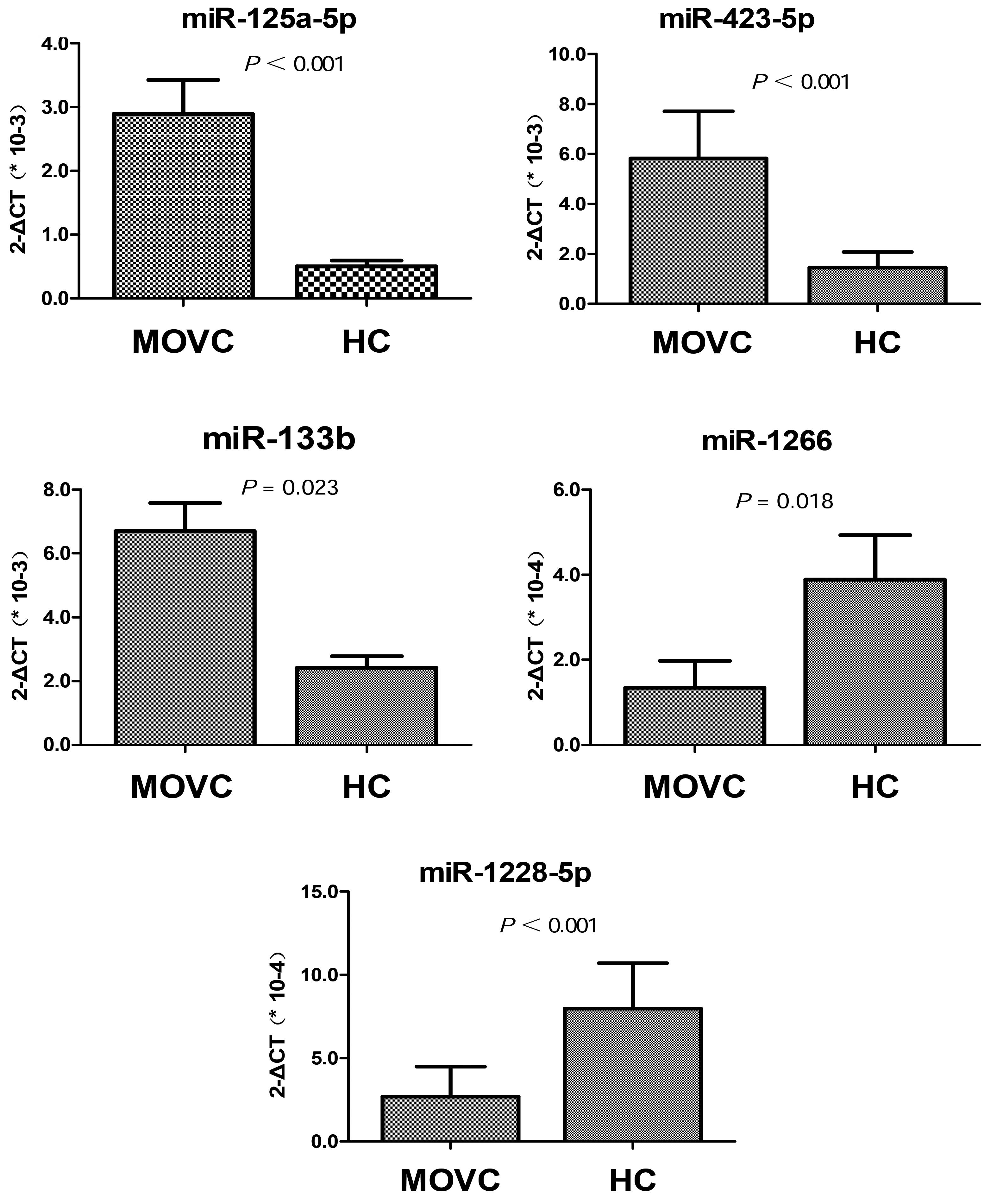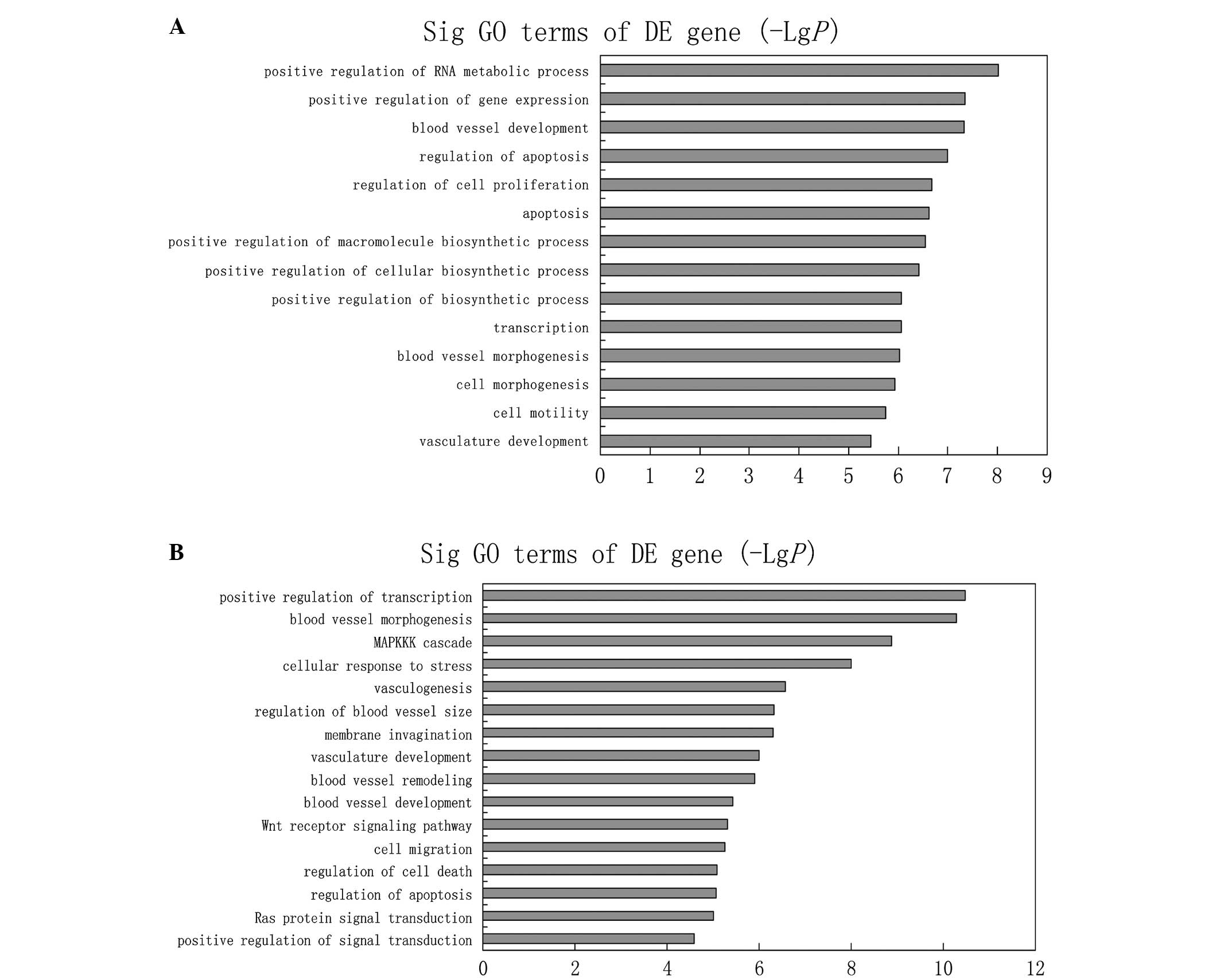|
1
|
Valla DC: Primary Budd-Chiari syndrome. J
Hepatol. 50:195–203. 2009. View Article : Google Scholar : PubMed/NCBI
|
|
2
|
Hefaiedh R, Cheikh M, Marsaoui L, Ennaifer
R, Romdhane H, Ben Nejma H, Bel Hadj N, Arfa N and Khalfallah MT:
The Budd-Chiari syndrome. Tunis Med. 91:376–381. 2013.PubMed/NCBI
|
|
3
|
Leebeek FW, Smalberg JH and Janssen HL:
Prothrombotic disorders in abdominal vein thrombosis. Neth J Med.
70:400–405. 2012.PubMed/NCBI
|
|
4
|
Plessier A, Rautou PE and Valla DC:
Management of hepatic vascular diseases. J Hepatol. 56:S25–S38.
2012. View Article : Google Scholar : PubMed/NCBI
|
|
5
|
Plessier A and Valla DC: Budd-Chiari
syndrome. Semin Liver Dis. 28:259–269. 2008. View Article : Google Scholar : PubMed/NCBI
|
|
6
|
Qi X, Han G, Wu F, Ren W, He C, Yin Z, Niu
J, Bai M, Yang Z, Wu K and Fan D: Thrombotic risk factors in
Chinese Budd-Chiari syndrome patients. An observational study with
a systematic review of the literature. Thromb Haemost. 109:878–884.
2013. View Article : Google Scholar : PubMed/NCBI
|
|
7
|
Cheng D, Xu H, Lu ZJ, Hua R, Qiu H, Du H,
Xu X and Zhang J: Clinical features and etiology of Budd-Chiari
syndrome in Chinese patients: A single. center study. J
Gastroenterol Hepatol. 28:1061–1067. 2013. View Article : Google Scholar : PubMed/NCBI
|
|
8
|
Murad Darwish S, Plessier A,
Hernandez-Guerra M, Fabris F, Eapen CE, Bahr MJ, Trebicka J, Morard
I, Lasser L, Heller J, et al: EN-Vie (European Network for Vascular
Disorders of the Liver): Etiology, management and outcome of the
Budd-Chiari syndrome. Ann Intern Med. 151:167–175. 2009. View Article : Google Scholar : PubMed/NCBI
|
|
9
|
Smalberg JH, Arends LR, Valla DC,
Kiladjian JJ, Janssen HL and Leebeek FW: Myeloproliferative
neoplasms in Budd-Chiari syndrome and portal vein thrombosis: A
meta-analysis. Blood. 120:4921–4928. 2012. View Article : Google Scholar : PubMed/NCBI
|
|
10
|
Okuda K: Membranous obstruction of the
inferior vena cava (obliterative hepatocavopathy, Okuda). J
Gastroenterol Hepatol. 16:1179–1183. 2001. View Article : Google Scholar : PubMed/NCBI
|
|
11
|
Wang ZG, Zhang FJ, Yi MQ and Qiang LX:
Evolution of management for Budd-Chiari syndrome: A team's view
from 2564 patients. ANZ J Surg. 75:55–63. 2005. View Article : Google Scholar : PubMed/NCBI
|
|
12
|
Qi X, Zhang C, Han G, Zhang W, He C, Yin
Z, Liu Z, Bai W, Li R, Bai M, et al: Prevalence of the JAK2V617F
mutation in Chinese patients with Budd-Chiari syndrome and portal
vein thrombosis: A prospective study. J Gastroenterol Hepatol.
27:1036–1043. 2012. View Article : Google Scholar : PubMed/NCBI
|
|
13
|
Wang H, Sun G, Zhang P, Zhang J, Gui E, Zu
M, Jia E, Xu H, Xu L, Zhang J and Lu Z: JAK2 V617F mutation and
46/1 haplotype in Chinese Budd-Chiari syndrome patients. J
Gastroenterol Hepatol. 29:208–214. 2014. View Article : Google Scholar : PubMed/NCBI
|
|
14
|
Valla DC: Hepatic venous outflow tract
obstruction etiopathogenesis: Asia versus the West. J Gastroenterol
Hepatol. 19:S204–S211. 2004. View Article : Google Scholar
|
|
15
|
Bartel DP: MicroRNAs: Target recognition
and regulatory functions. Cell. 136:215–233. 2009. View Article : Google Scholar : PubMed/NCBI
|
|
16
|
Bartel DP: MicroRNAs: Genomics,
biogenesis, mechanism and function. Cell. 116:281–297. 2004.
View Article : Google Scholar : PubMed/NCBI
|
|
17
|
Urbich C, Kuehbacher A and Dimmeler S:
Role of microRNAs in vascular diseases, inflammation and
angiogenesis. Cardiovasc Res. 79:581–588. 2008. View Article : Google Scholar : PubMed/NCBI
|
|
18
|
Small EM and Olson EN: Pervasive roles of
microRNAs in cardiovascular biology. Nature. 469:336–342. 2011.
View Article : Google Scholar : PubMed/NCBI
|
|
19
|
Yue J, Guan J, Wang X, Zhang L, Yang Z, Ao
Q, Deng Y, Zhu P and Wang G: MicroRNA-206 is involved in
hypoxia-induced pulmonary hypertension through targeting of the
HIF-1α/Fhl-1 pathway. Lab Invest. 93:748–759. 2013. View Article : Google Scholar : PubMed/NCBI
|
|
20
|
Icli B, Wara AK, Moslehi J, Sun X, Plovie
E, Cahill M, Marchini JF, Schissler A, Padera RF, Shi J, et al:
MicroRNA-26a regulates pathological and physiological angiogenesis
by targeting BMP/SMAD1 signaling. Circ Res. 113:1231–1241. 2013.
View Article : Google Scholar : PubMed/NCBI
|
|
21
|
Zhao Z, Zhao Q, Warrick J, Lockwood CM,
Woodworth A, Moley KH and Gronowski AM: Circulating microRNA
miR-323-3p as a biomarker of ectopic pregnancy. Clin Chem.
58:896–905. 2012. View Article : Google Scholar : PubMed/NCBI
|
|
22
|
Tan L, Yu JT, Liu QY, Tan MS, Zhang W, Hu
N, Wang YL, Sun L and Jiang T: Circulating miR-125b as a biomarker
of Alzheimer's disease. J Neurol Sci. 336:52–56. 2014. View Article : Google Scholar : PubMed/NCBI
|
|
23
|
El-Hefnawy T, Raja S, Kelly L, Bigbee WL,
Kirkwood JM, Luketich JD and Godfrey TE: Characterization of
amplifiable, circulating RNA in plasma and its potential as a tool
for cancer diagnostics. Clin Chem. 50:564–573. 2004. View Article : Google Scholar : PubMed/NCBI
|
|
24
|
Mitchell PS, Parkin RK, Kroh EM, Fritz BR,
Wyman SK, Pogosova-Agadjanyan EL, Peterson A, Noteboom J, O'Briant
KC, Allen A, et al: Circulating microRNAs as stable blood-based
markers for cancer detection. Proc Natl Acad Sci USA.
105:10513–10518. 2008. View Article : Google Scholar : PubMed/NCBI
|
|
25
|
Ach RA, Wang H and Curry B: Measuring
microRNAs: Comparisons of microarray and quantitative PCR
measurements, and of different total RNA prep methods. BMC
Biotechno. 8:692008. View Article : Google Scholar
|
|
26
|
Kroh EM, Parkin RK, Mitchell PS and Tewari
M: Analysis of circulating microRNA biomarkers in plasma and serum
using quantitative reverse transcription-PCR (qRT-PCR). Methods.
50:298–301. 2010. View Article : Google Scholar : PubMed/NCBI
|
|
27
|
Livak KJ and Schmittgen TD: Analysis of
relative gene expression data using real-time quantitative PCR and
the 2(−Delta Delta C(T)) Method. Methods. 25:402–408. 2001.
View Article : Google Scholar : PubMed/NCBI
|
|
28
|
Li D, Yang P, Xiong Q, Song X, Yang X, Liu
L, Yuan W and Rui YC: MicroRNA-125a/b-5p inhibits endothelin-1
expression in vascular endothelial cells. J Hypertens.
28:1646–1654. 2010. View Article : Google Scholar : PubMed/NCBI
|
|
29
|
Wang E, Nie Y, Zhao Q, Wang W, Huang J,
Liao Z, Zhang H, Hu S and Zheng Z: Circulating miRNAs reflect early
myocardial injury and recovery after heart transplantation. J
Cardiothorac Surg. 8:1652013. View Article : Google Scholar : PubMed/NCBI
|
|
30
|
Tijsen AJ, Creemers EE, Moerland PD, de
Windt LJ, van der Wal AC, Kok WE and Pinto YM: MiR423-5p as a
circulating biomarker for heart failure. Circ Res. 106:1035–1039.
2010. View Article : Google Scholar : PubMed/NCBI
|
|
31
|
Chen L, Lu MH, Zhang D, Hao NB, Fan YH, Wu
YY, Wang SM, Xie R, Fang DC, Zhang H, et al: miR-1207-5p and
miR-1266 suppress gastric cancer growth and invasion by targeting
telomerase reverse transcriptase. Cell Death Dis. 5:e10342014.
View Article : Google Scholar : PubMed/NCBI
|
|
32
|
Jia L, Wu J, Zhang L, Chen J, Zhong D, Xu
S, Xie C and Cai J: Restoration of miR-1228* expression suppresses
epithelial-mesenchymal transition in gastric cancer. PLoS One.
8:e586372013. View Article : Google Scholar : PubMed/NCBI
|
|
33
|
Fu Y, Yi Z, Wu X, Li J and Xu F:
Circulating microRNAs in patients with active pulmonary
tuberculosis. J Clin Microbiol. 49:4246–4251. 2011. View Article : Google Scholar : PubMed/NCBI
|
|
34
|
Li D, Yang P, Xiong Q, Song X, Yang X, Liu
L, Yuan W and Rui YC: MicroRNA-125a/b-5p inhibits endothelin-1
expression in vascular endothelial cells. J Hypertens.
28:1646–1654. 2010. View Article : Google Scholar : PubMed/NCBI
|
|
35
|
Reijerkerk A, Lopez-Ramirez MA, van Het
Hof B, Drexhage JA, Kamphuis WW, Kooij G, Vos JB, van der Pouw
Kraan TC, van Zonneveld AJ, Horrevoets AJ, et al: MicroRNAs
regulate human brain endothelial cell-barrier function in
inflammation: Implications for multiple sclerosis. J Neurosci.
33:6857–6863. 2013. View Article : Google Scholar : PubMed/NCBI
|
|
36
|
Che P, Liu J, Shan Z, Wu R, Yao C, Cui J,
Zhu X and Wang J, Burnett MS, Wang S and Wang J: MiR-125a-5p
impairs endothelial cell angiogenesis in aging mice via RTEF-1
downregulation. Aging Cell. 13:926–934. 2014. View Article : Google Scholar : PubMed/NCBI
|
|
37
|
Hao L, Wang XG, Cheng JD, You SZ, Ma SH,
Zhong X, Quan L and Luo B: The up-regulation of endothelin-1 and
down-regulation of miRNA-125a-5p, −155 and −199a/b-3p in human
atherosclerotic coronary artery. Cardiovasc Pathol. 23:217–223.
2014. View Article : Google Scholar : PubMed/NCBI
|
|
38
|
Dashwood MR and Tsui JC: Endothelin-1 and
atherosclerosis: Potential complications associated with
endothelin-receptor blockade. Atherosclerosis. 160:297–304. 2002.
View Article : Google Scholar : PubMed/NCBI
|
|
39
|
Kowala MC: The role of endothelin in the
pathogenesis of atherosclerosis. Adv Pharmacol. 37:299–318. 1997.
View Article : Google Scholar : PubMed/NCBI
|
|
40
|
Zhao H, Li M, Li L, Yang X, Lan G and
Zhang Y: MiR-133b is down-regulated in human osteosarcoma and
inhibits osteosarcoma cells proliferation, migration and invasion
and promotes apoptosis. PLoS One. 8:e835712013. View Article : Google Scholar : PubMed/NCBI
|
|
41
|
Zhao Y, Huang J, Zhang L, Qu Y, Li J, Yu
B, Yan M, Yu Y, Liu B and Zhu Z: MiR-133b is frequently decreased
in gastric cancer and its overexpression reduces the metastatic
potential of gastric cancer cells. BMC Cancer. 14:342014.
View Article : Google Scholar : PubMed/NCBI
|
|
42
|
Wang E, Nie Y, Zhao Q, Wang W, Huang J,
Liao Z, Zhang H, Hu S and Zheng Z: Circulating miRNAs reflect early
myocardial injury and recovery after heart transplantation. J
Cardiothorac Surg. 8:1652013. View Article : Google Scholar : PubMed/NCBI
|
|
43
|
Tijsen AJ, Creemers EE, Moerland PD, de
Windt LJ, van der Wal AC, Kok WE and Pinto YM: MiR423-5p as a
circulating biomarker for heart failure. Circ Res. 106:1035–1039.
2010. View Article : Google Scholar : PubMed/NCBI
|
|
44
|
Chen L, Lü MH, Zhang D, Hao NB, Fan YH, Wu
YY, Wang SM, Xie R, Fang DC, Zhang H, et al: MiR-1207-5p and
miR-1266 suppress gastric cancer growth and invasion by targeting
telomerase reverse transcriptase. Cell Death Dis. 5:e10342014.
View Article : Google Scholar : PubMed/NCBI
|
|
45
|
Jia L, Wu J, Zhang L, Chen J, Zhong D, Xu
S, Xie C and Cai J: Restoration of miR-1228* expression suppresses
epithelial-mesenchymal transition in gastric cancer. PLoS One.
8:e586372013. View Article : Google Scholar : PubMed/NCBI
|
|
46
|
Pentassuglia L and Sawyer DB:
ErbB/integrin signaling interactions in regulation of myocardial
cell-cell and cell-matrix interactions. Biochim Biophys Acta.
1833:909–916. 2013. View Article : Google Scholar : PubMed/NCBI
|
|
47
|
Koziński K and Dobrzyń A: Wnt signaling
pathway-its role in regulation of cell metabolism. Postepy Hig Med
Dosw (Online). 67:1098–1108. 2013. View Article : Google Scholar : PubMed/NCBI
|
|
48
|
Siddiqui SS, Siddiqui ZK, Uddin S,
Minshall RD and Malik AB: P38 MAPK activation coupled to
endocytosis is a determinant of endothelial monolayer integrity. Am
J Physiol Lung Cell Mol Physiol. 292:L114–L124. 2007. View Article : Google Scholar : PubMed/NCBI
|
|
49
|
Liang X, Xu F, Li X, Ma C, Zhang Y and Xu
W: VEGF signal system: The application of antiangiogenesis. Curr
Med Chem. 21:894–910. 2014. View Article : Google Scholar : PubMed/NCBI
|
|
50
|
Shibuya M: Vascular endothelial growth
factor and its receptor system: Physiological functions in
angiogenesis and pathological roles in various diseases. J Biochem.
153:13–19. 2013. View Article : Google Scholar : PubMed/NCBI
|

















